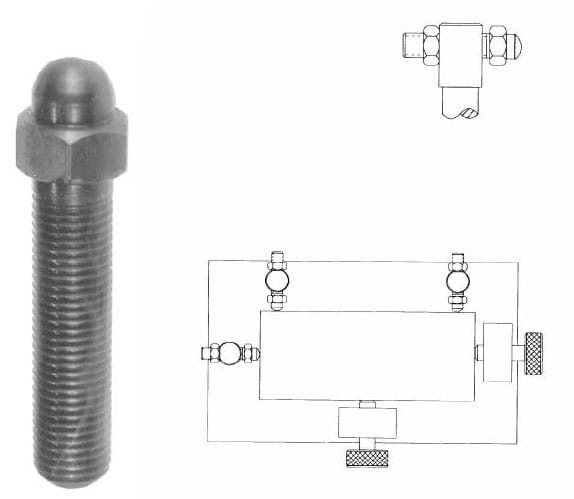Adjustable locators and supports require less precision to mount on the tool body. For a typical workholder, they are mounted at approximately the correct position and then adjusted to the exact location. The adjustable locating buttons shown in Figure 7-14 are a typical example.
The specific design or configuration of an adjustable locator is normally left to the designer. In the design of an adjustable locator, four factors should be considered: 1) the stability and precision of the location; 2) the ability to compensate for variance in workpiece sizes and locating areas; 3) the ability to compensate for wear on the locating element; 4) the ability to maintain the fixed location points.
These design factors are the same as those required for other types of locational devices, and some are actually easier to achieve with adjustable locators than with fixed locators. The main disadvantage of adjustable locators is that the operator has the most responsibility of ensuring accuracy and precision, not the tool builder.
 Figure 7-14. Adjustable locating buttons can be used instead of fixed locating pins when some adjustability is needed.
Figure 7-14. Adjustable locating buttons can be used instead of fixed locating pins when some adjustability is needed.
To achieve stability and precision, the locator and its mounting device must be large enough to resist all machining and clamping forces. To provide adjustment, the most popular adjustable locators have a screw thread to control position and accuracy.
The next consideration is compensating for workpiece variations. Size differences are accommodated by setting the locators based on the MMC (Maximum Material Condition) size of the workpiece. Here adjustable locators have an advantage: part size may vary less within a single production lot, so the locator can be set to a tighter tolerance.
Compensating for locator wear can be controlled with the screw thread or other adjusting device built into the locator. To reduce wear, hardened elements can be used on the contact surfaces. Hardened, adjustable locators are also available, with a variety of configurations and surfaces to suit the workpiece requirements. Hydraulic systems also have a variety of adjustable locators/supports which can be an effective solution as part of a hydraulic clamping system.
The final consideration is keeping the adjustable locator in its fixed position during the life of the workholder, or until adjusted for wear. Here the adjustable locator needs a lock to maintain its position. The simplest way is to use a jam nut to hold the position of the locator. Other methods, such as thread-sealing compound to glue the thread in place, or tack welding, also prevent movement.